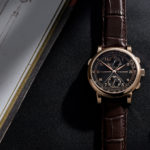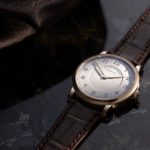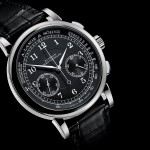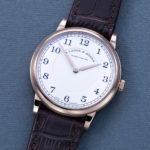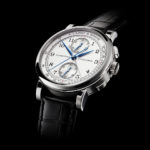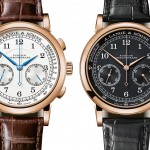Up Close: A. Lange & Söhne 1815 Rattrapante Honeygold “Homage to F.A. Lange”
Striking and slim.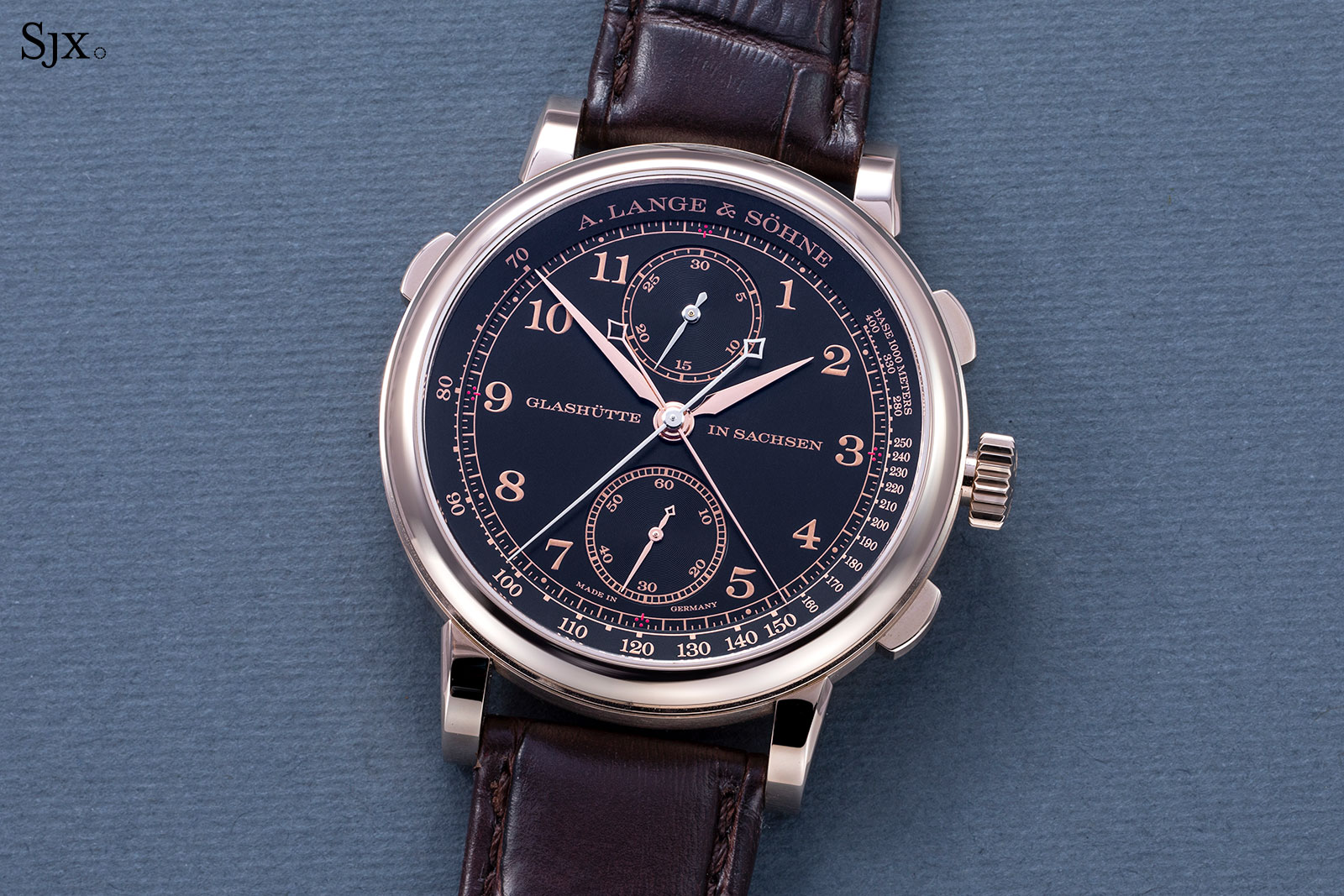
Introduced last year as part of the 175th Anniversary trio, the 1815 Rattrapante Honeygold “Homage to F.A. Lange” is the first straightforward split-seconds chronograph wristwatch unveiled by A. Lange & Söhne. Simpler, but not simple, the 1815 Rattrapante is appealing in the way that many Lange watches are – the quality of fit and finish is obvious – but it is also notable in both style and movement construction.
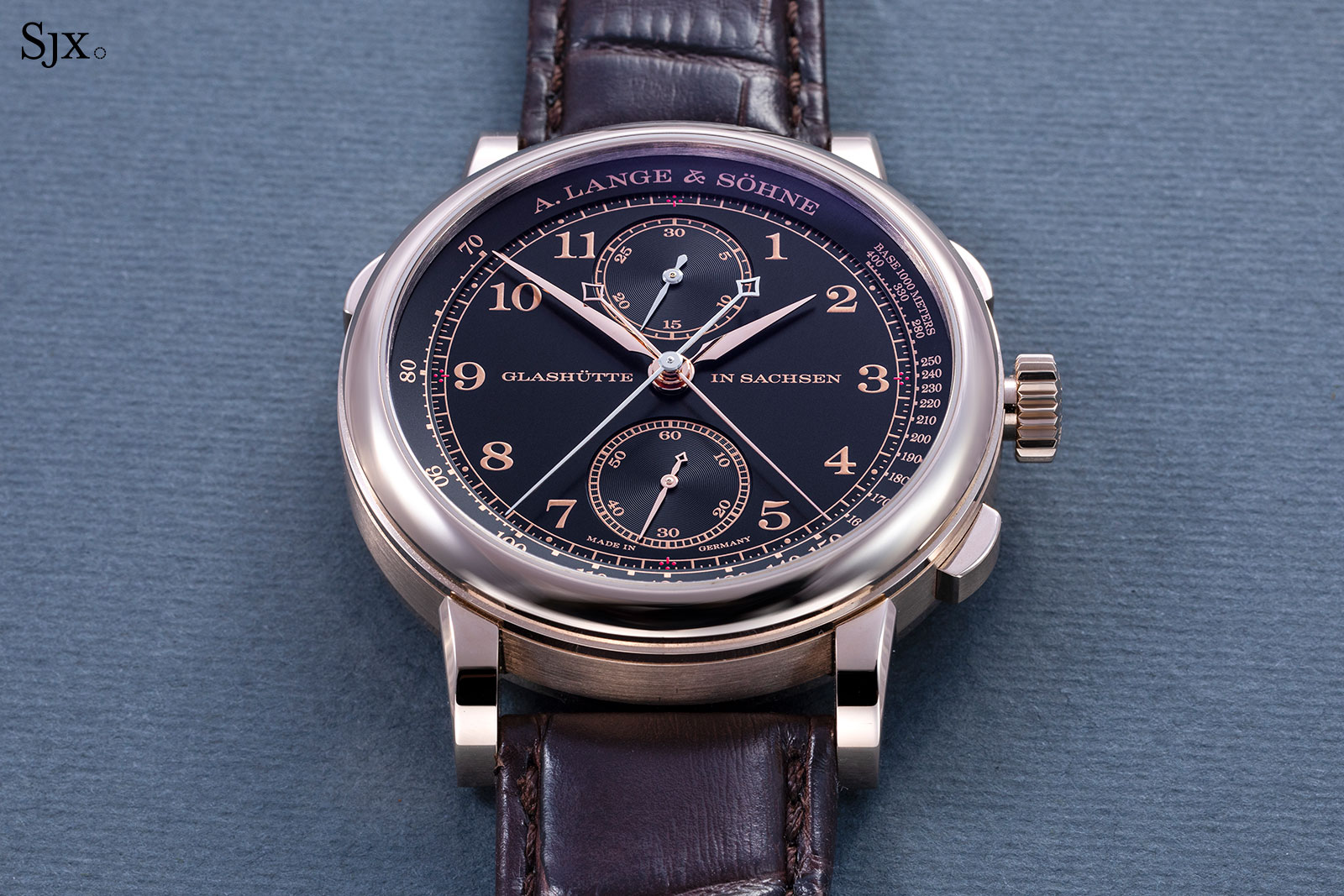
Initial thoughts
A small run of just 100 watches, the 1815 Rattrapante is mostly sold out. Nonetheless it’s a beautiful and unusual enough that it is worth a look.
While the other two “Homage to F.A. Lange” 175th Anniversary limited editions – the 1815 Thin and Tourbograph – are powered by movements found in other models, the 1815 Rattrapante is equipped with its own calibre, the L101.2. Granted, the L101.2 derived from the movement in the 1815 Rattrapante Perpetual Calendar, but it is still substantially different.
For one, it has more elegant proportions than the average complicated Lange, with a profile that’s relatively flat. The brand’s complex watches are often big – both wide and thick – so the 1815 Rattrapante stands out for being smaller in comparison. It is a still a largish 41.2 mm in diameter, but just 12.6 mm high.
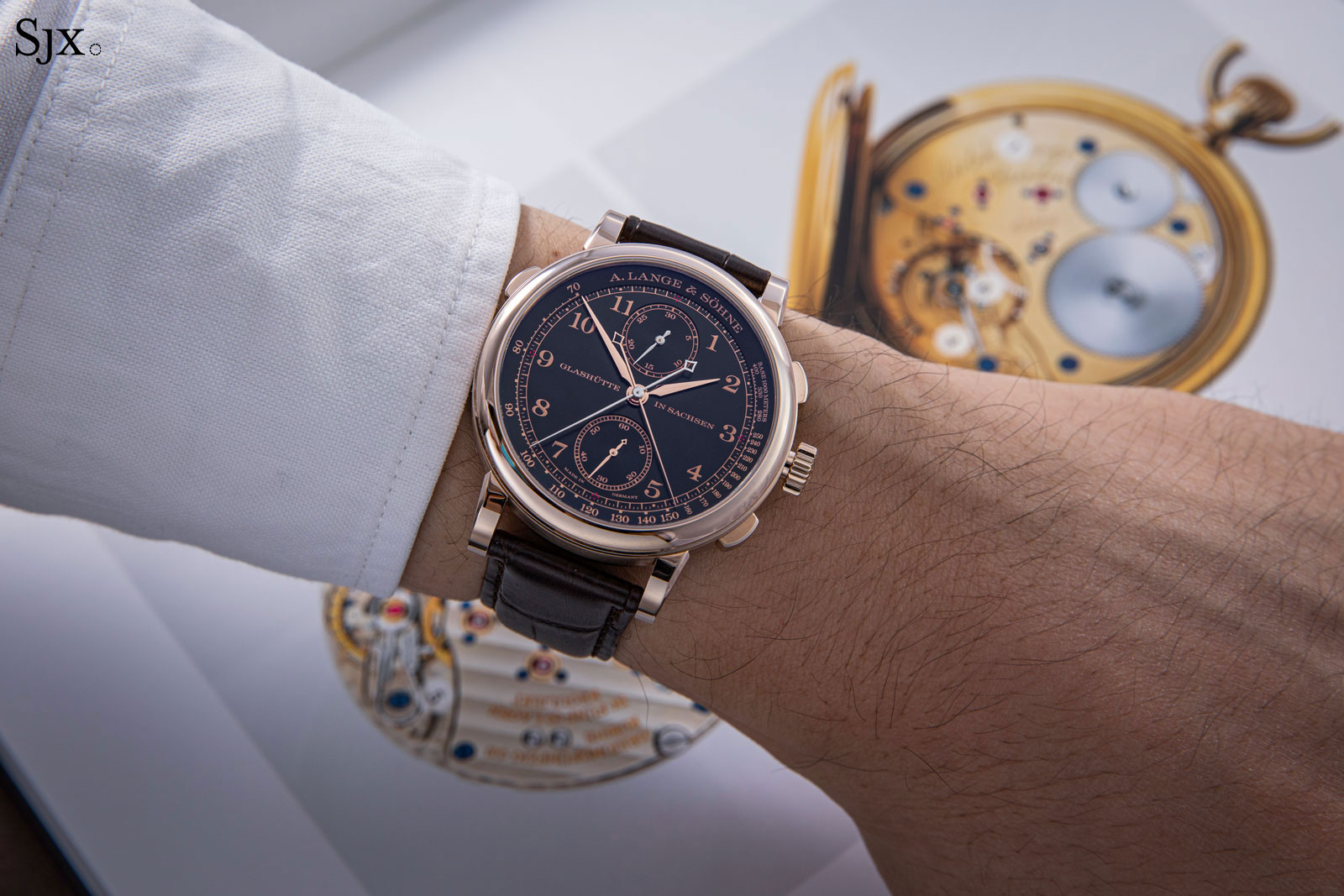
While clearly an 1815 in style, the Rattrapante diverges in its colours. Lange rolls out fewer colour iterations of its models than its peers, which makes this combination unorthodox. Bringing to mind the fashionable “gilt” finish common on vintage remakes, the dial looks like the other watches in the 1815 line, but with a stronger presence.
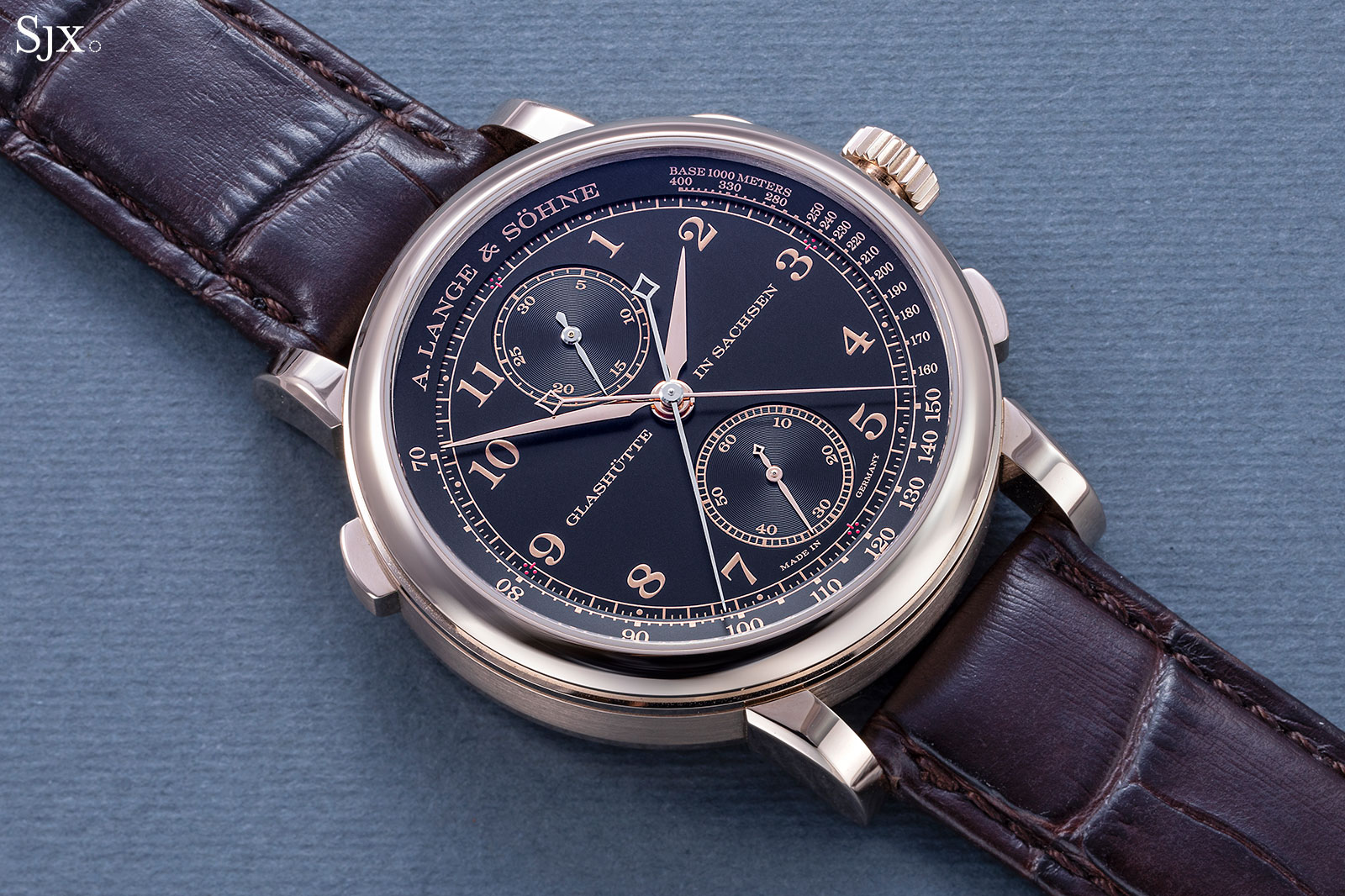
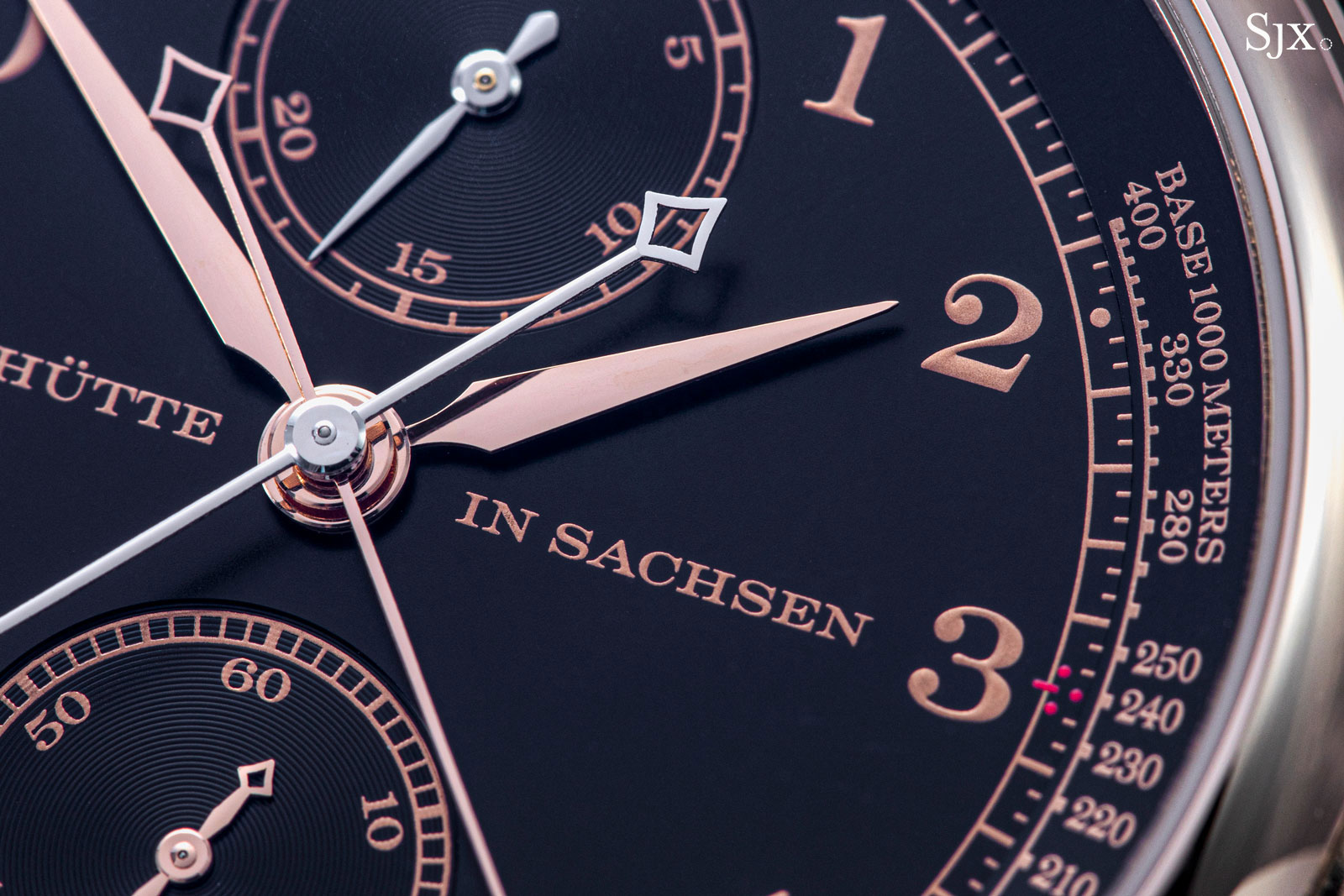
Unsurprisingly, the movement inside is impressive in both style and finish. Though more muted than the standard Lange decoration, the frosted 175th Anniversary finishing is attractive and suited to the pocket watch styling on the front.
With all that in mind, the US$134,000 price tag of the 1815 Rattrapante is surprisingly good value, both relative to Lange’s other offerings and against the competition. It might be mostly sold out, but fingers crossed the movement makes a return in another model.
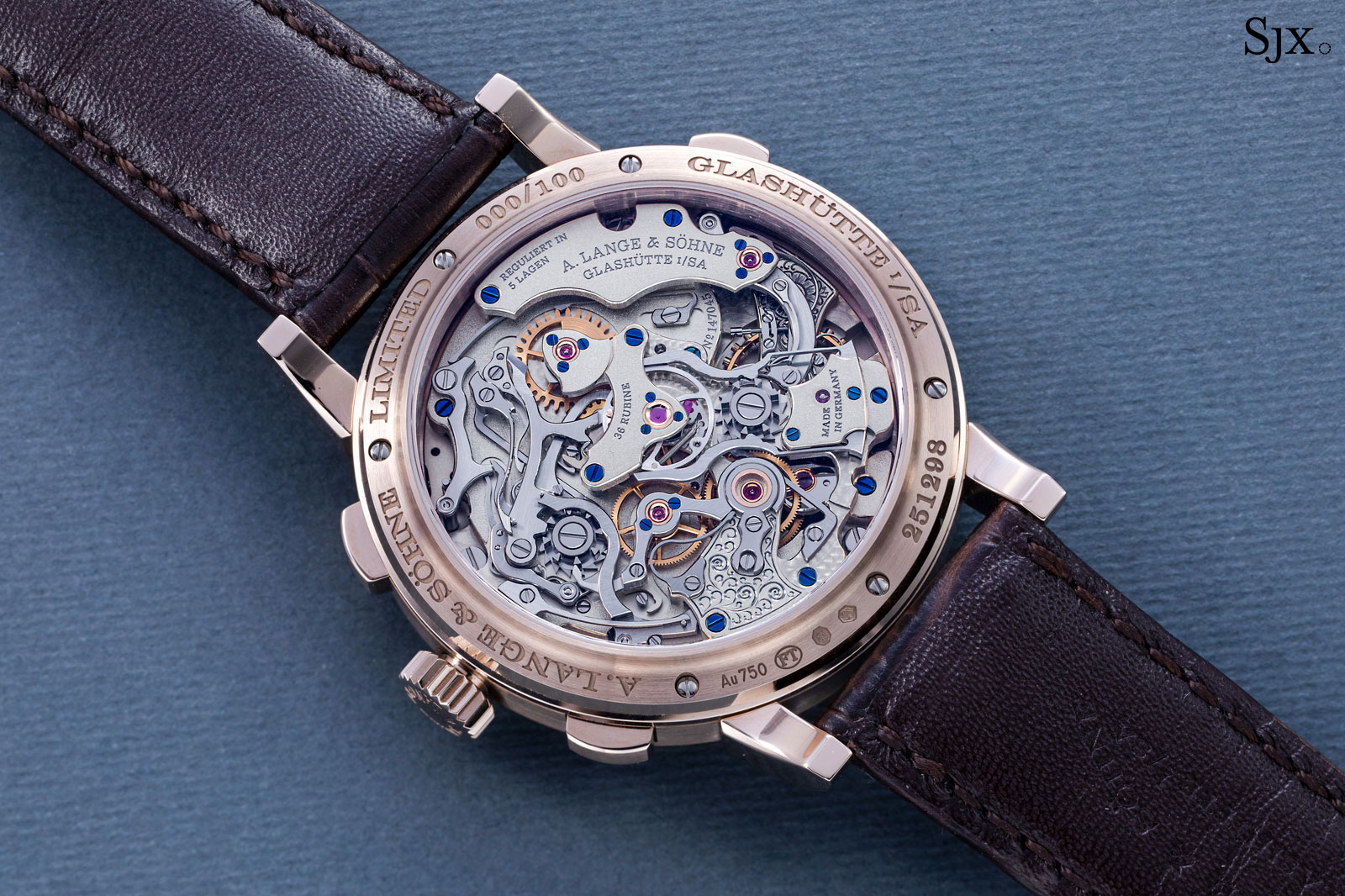
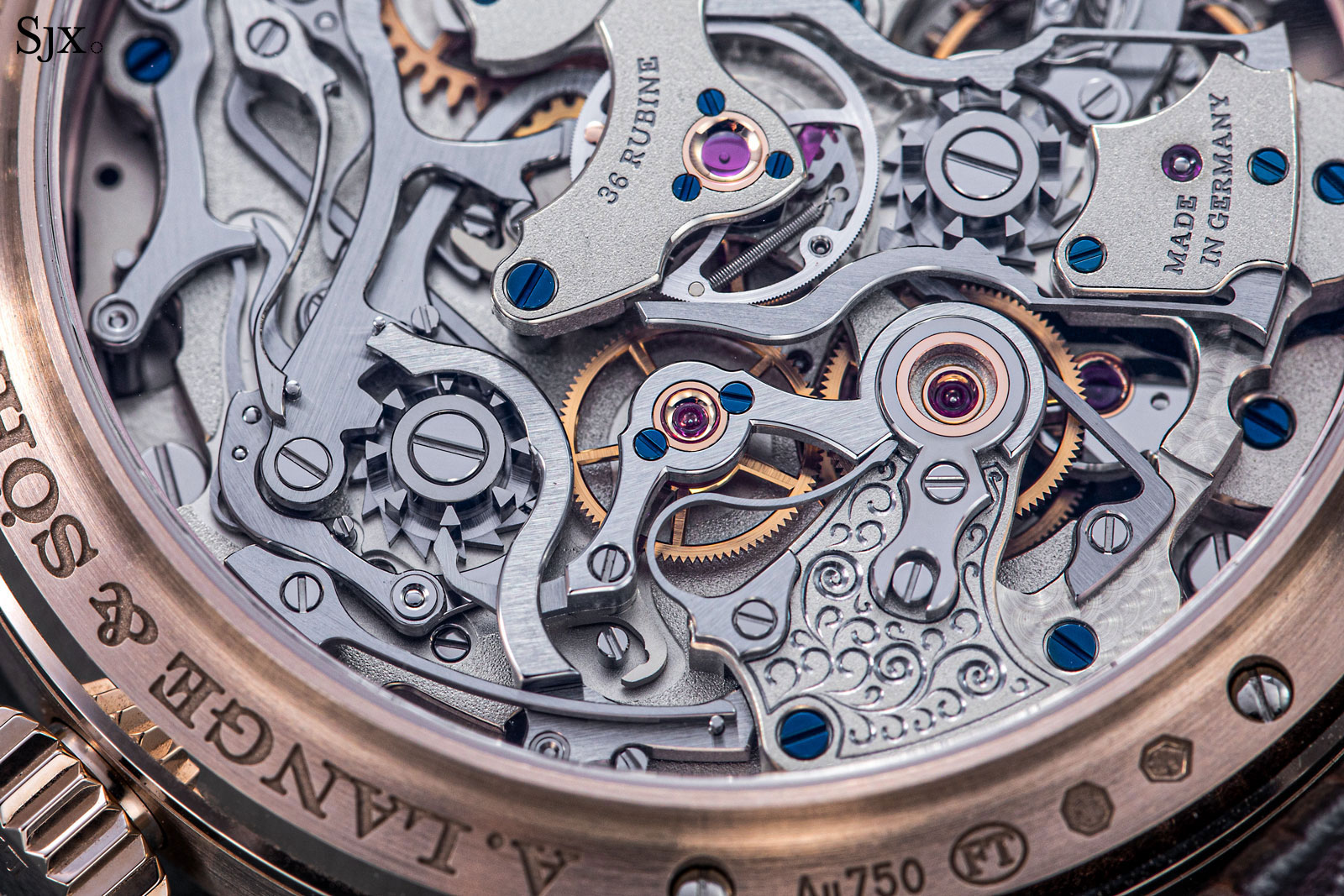
The frosted bridges are unique to the 175th Anniversary limited editions
Honeygold
While no longer that special since Lange has made about a dozen models in the metal, Honeygold is still unusual enough to be interesting. Distinctive in colour – best described as a muted mix of yellow and pink gold – Honeygold is exclusive to Lange in watchmaking. The brand hasn’t revealed much about the alloy, except that it’s substantially harder than conventional 18k gold alloys.
The 1815 Rattrapante stands just 12.6 mm high, but is a still a largish 41.2 mm in diameter. It’s about the same thickness as a Rolex Cosmograph Daytona – slim by Lange standards. In fact, it is svelte against the Triple Split, which is 15.6 mm thick (and 43.2 mm wide), or monsters like the Terra Luna that’s almost 17 mm high.
Because of the size of the watch, the 1815 Rattrapante makes quite a statement on the wrist, largely due to its appealing, high-contrast colours. The colour combination of the 1815 Rattrapante is a first for Lange, both in terms of its broader catalogue, which is dominated by silver or black dials, as well as earlier Honeygold watches that had silver-tone dials.
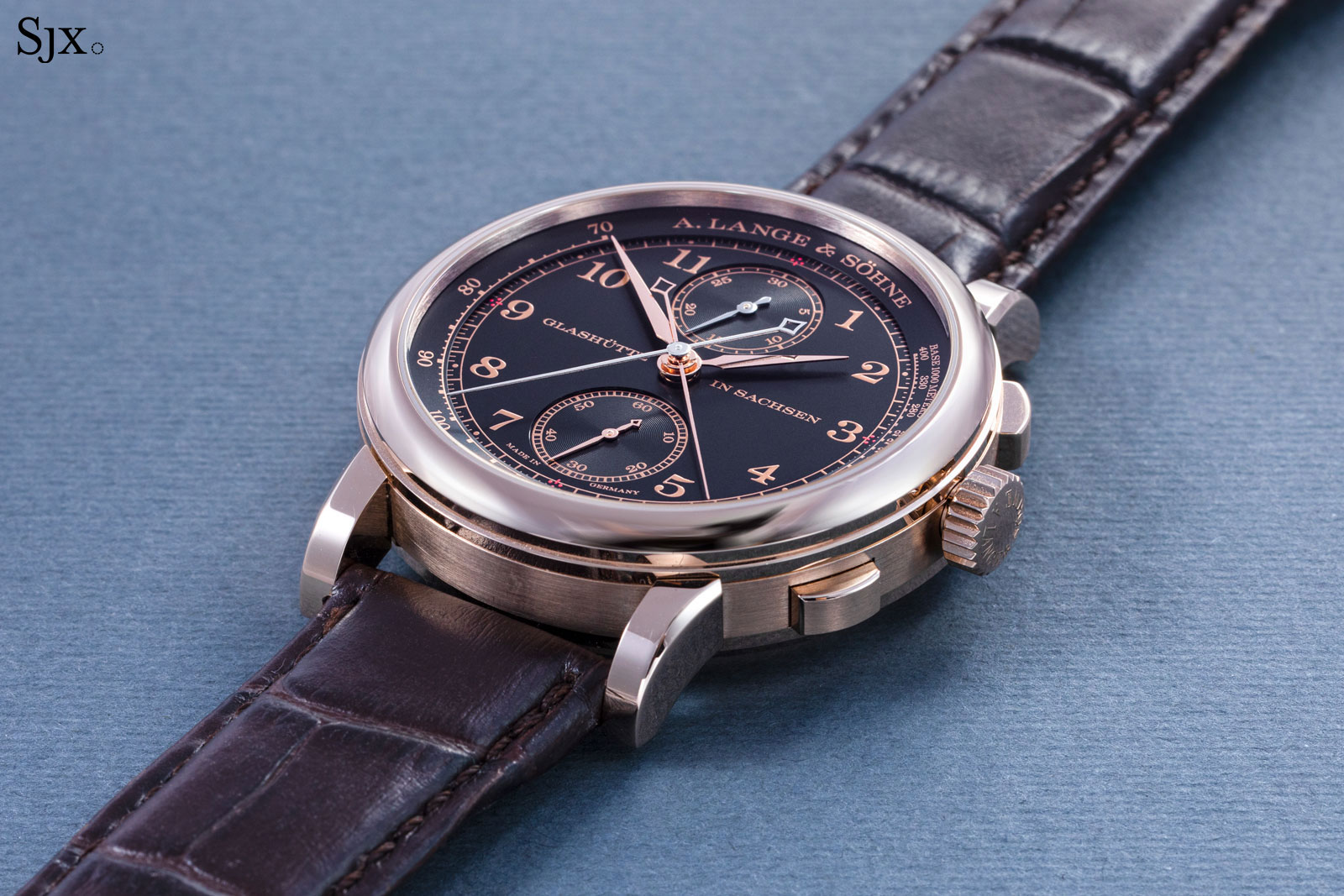
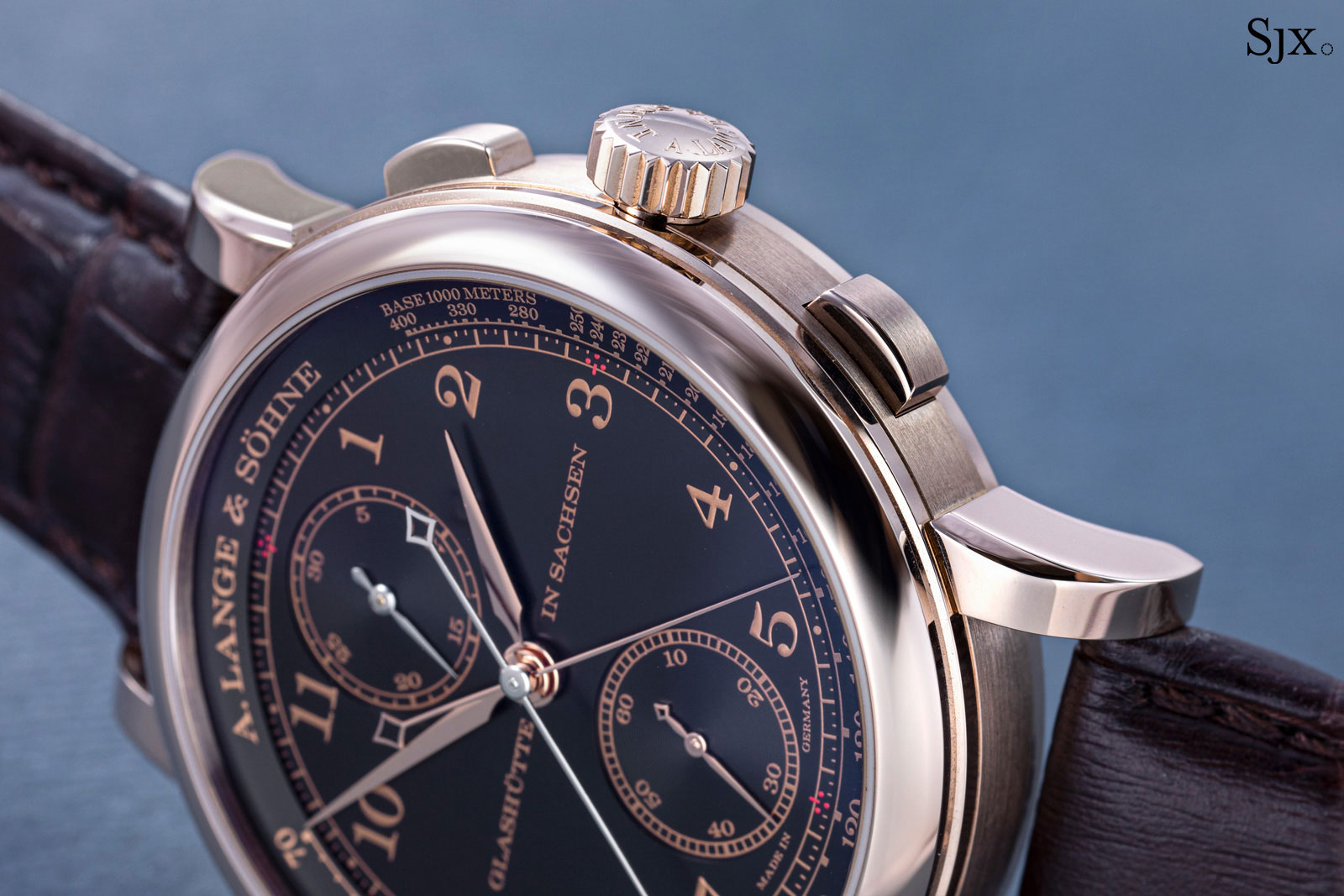
Some of the verticality of the case is broken up by the step at the base of the bezel
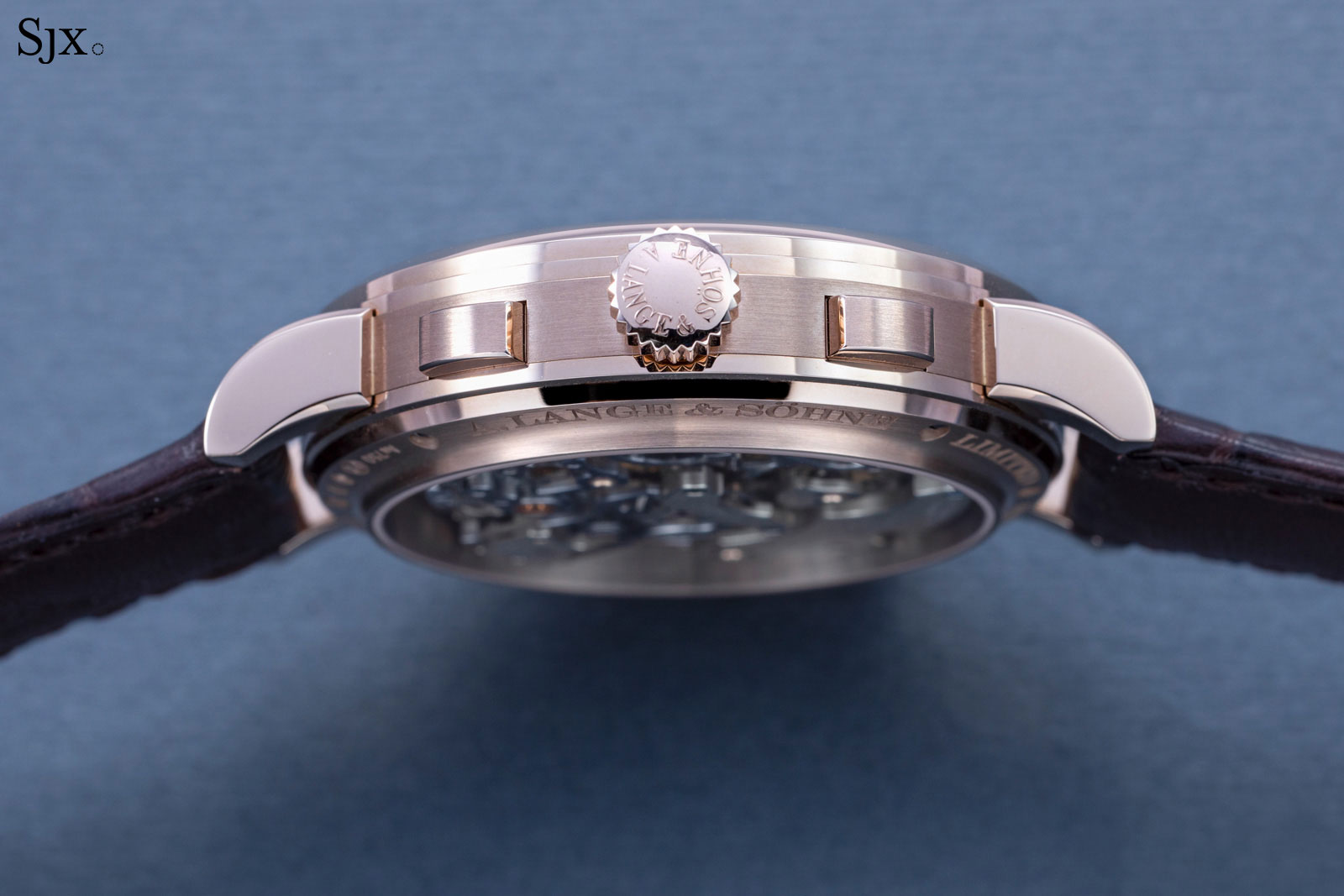
A disc of solid silver that’s been treated black, the dial is symmetrical with the registers arranged vertically, an entirely new layout for Lange but common in vintage pocket watches (and in the modern day also found in the IWC Portugieser Chronograph). On that topic, the “Glashütte in Sachsen” proclamation across the dial seems overdone initially, but it serves to emphasise the symmetry of the dial, both vertically and horizontally.
The gold-on-black dial is striking, while also executed slightly differently from most Lange dials. All of its copper-tone print is done in a metallic-powder lacquer that has a visible granular texture, instead of the conventional smooth, gloss finish.
The only bit of the dial I don’t appreciate are the red accents for the quarter markers of the seconds track. While I like the quirky markers – three dots and a dash inspired by vintage Lange pocket watch dials – the colour doesn’t have a specific function nor adds much to the look.
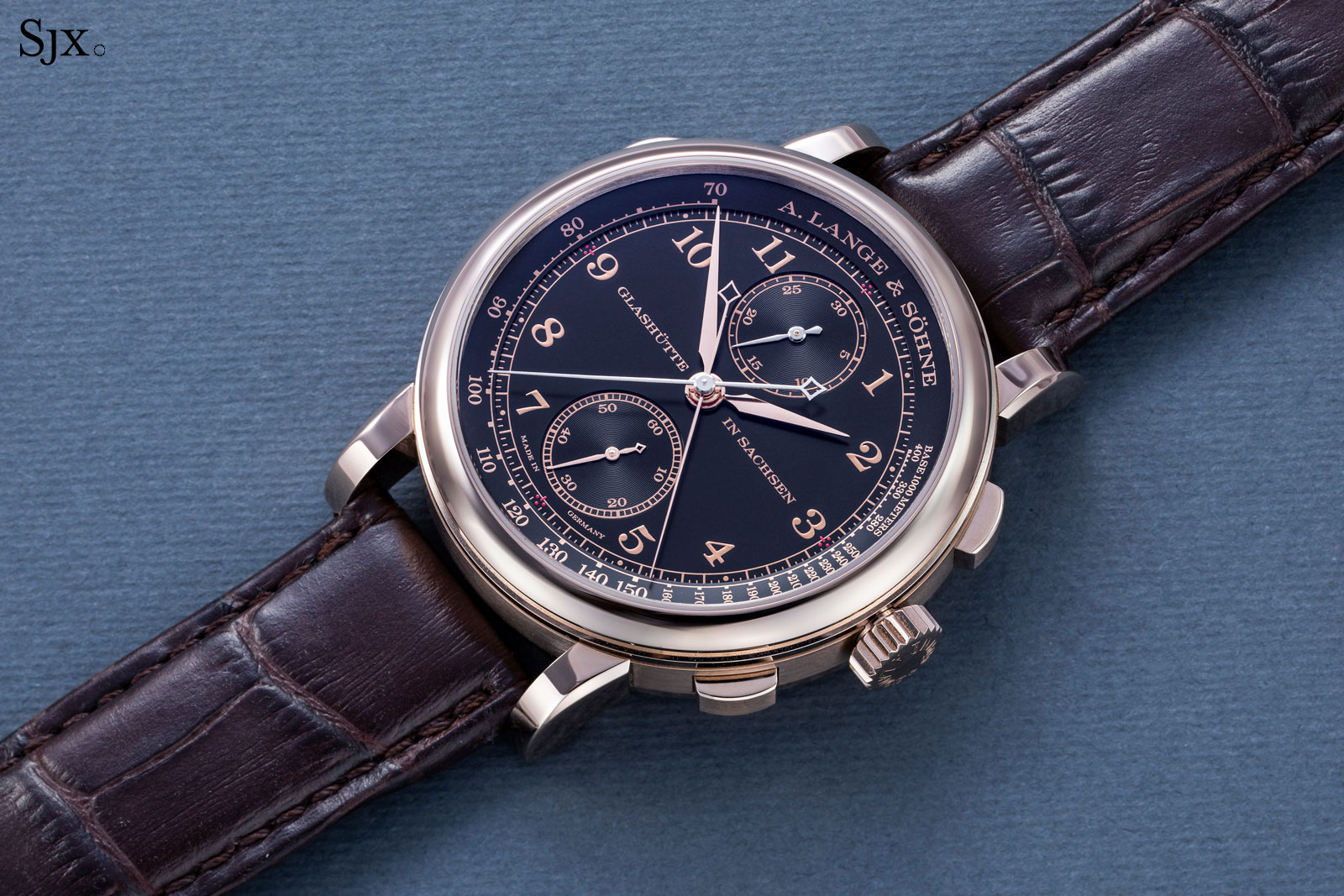
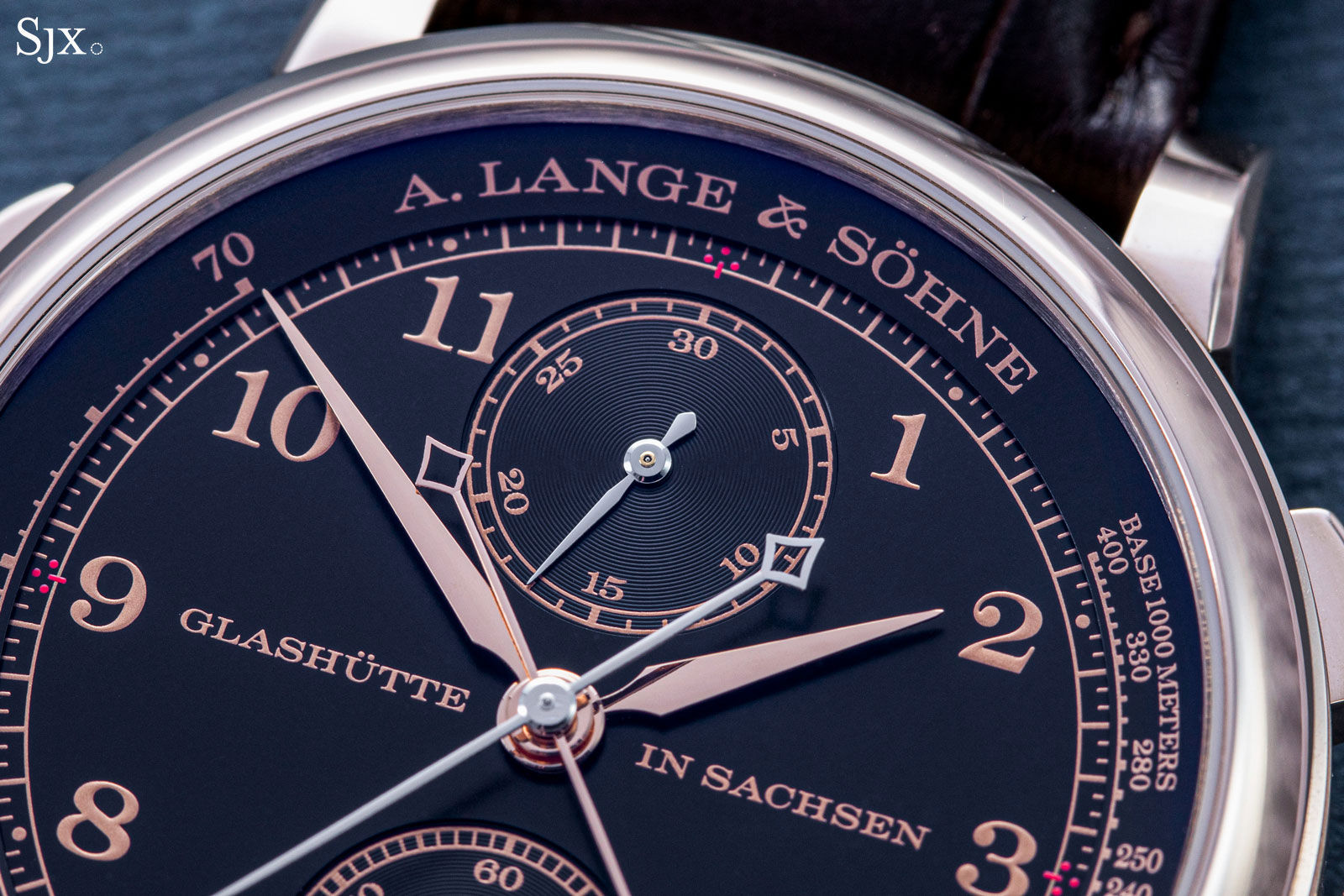
The line on the dial refers to Lange’s hometown in the state of Saxony
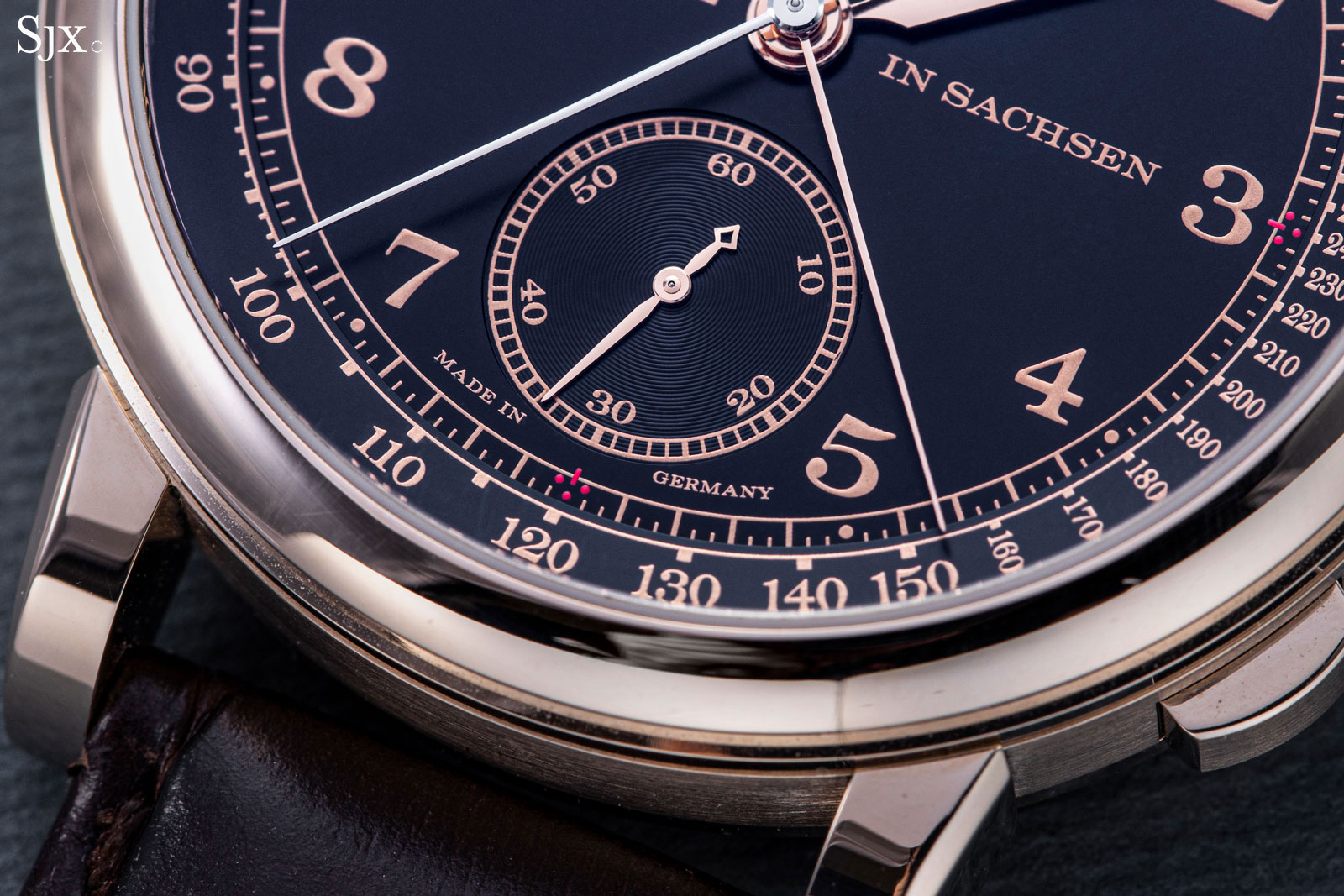
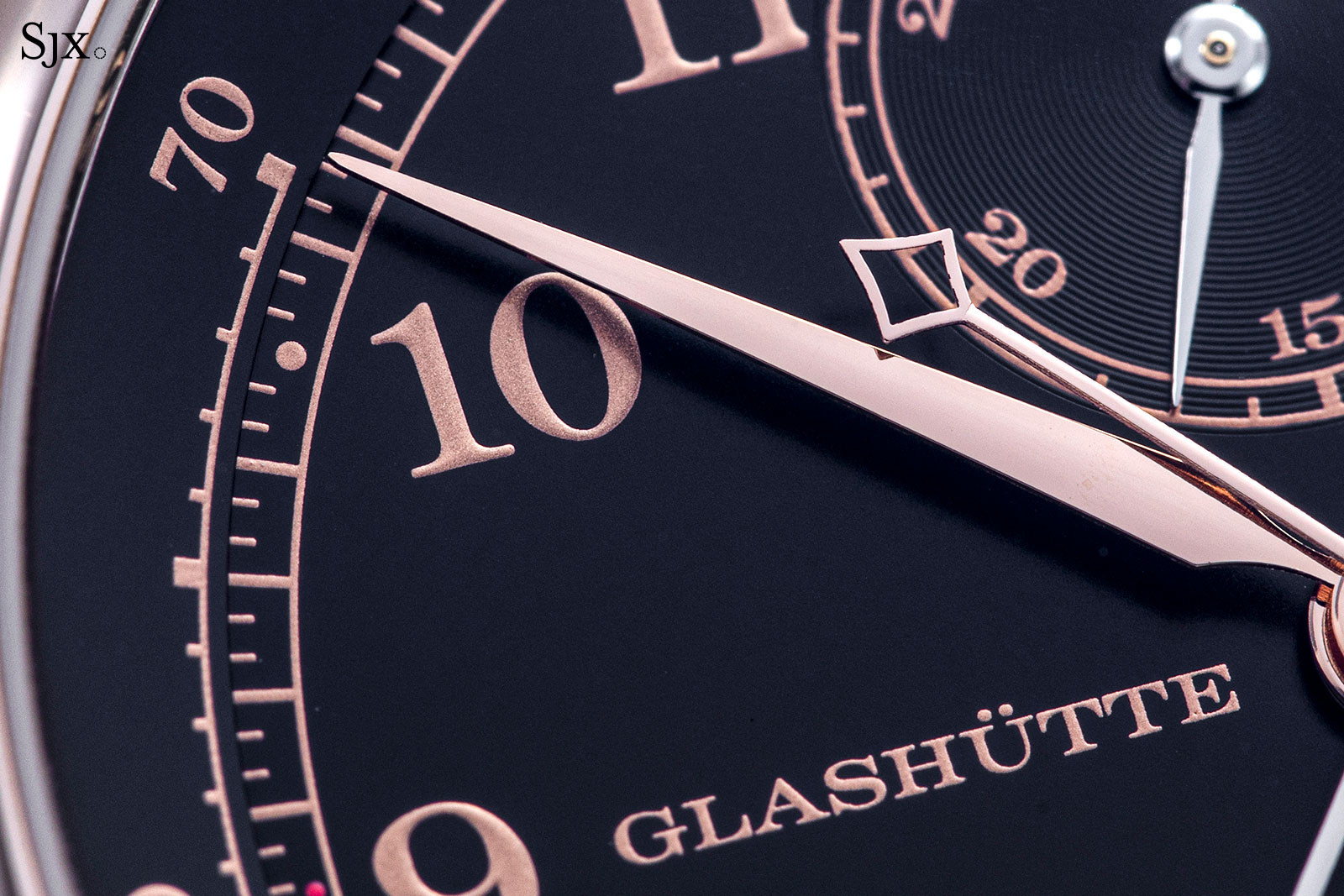
Special finishing
The L101.2 is essentially the L101.1 found in in the 1815 Rattrapante Perpetual Calendar sans perpetual calendar module (which was in turn descended from the movement in the L903.0 in the Tourbograph). It’s a straightforward construction (unlike the Double and Triple Splits), making it the simplest split-seconds chronograph movement Lange produces.
Visually, the L101.2 appears slightly shallower than Lange’s other chronograph movements, a consequence of a construction geared towards thinness. Most of its components have a wide and flat form instead of the narrow, thin parts that characterise movements like that of the Datograph.
That allows the L101.2 to be exceptionally slim by Lange standards, and fairly thin even in absolute terms, especially for a split-seconds.
The L101.2 stands just 7.4 mm high, even slimmer than the 7.9 mm of the L951.6 of the Datograph (which is a flyback chronograph with a big date). And the Omega cal. 321 (based on the Lemania CH27) in the original Speedmaster Moon Watch, for instance, is 6.74 mm high.
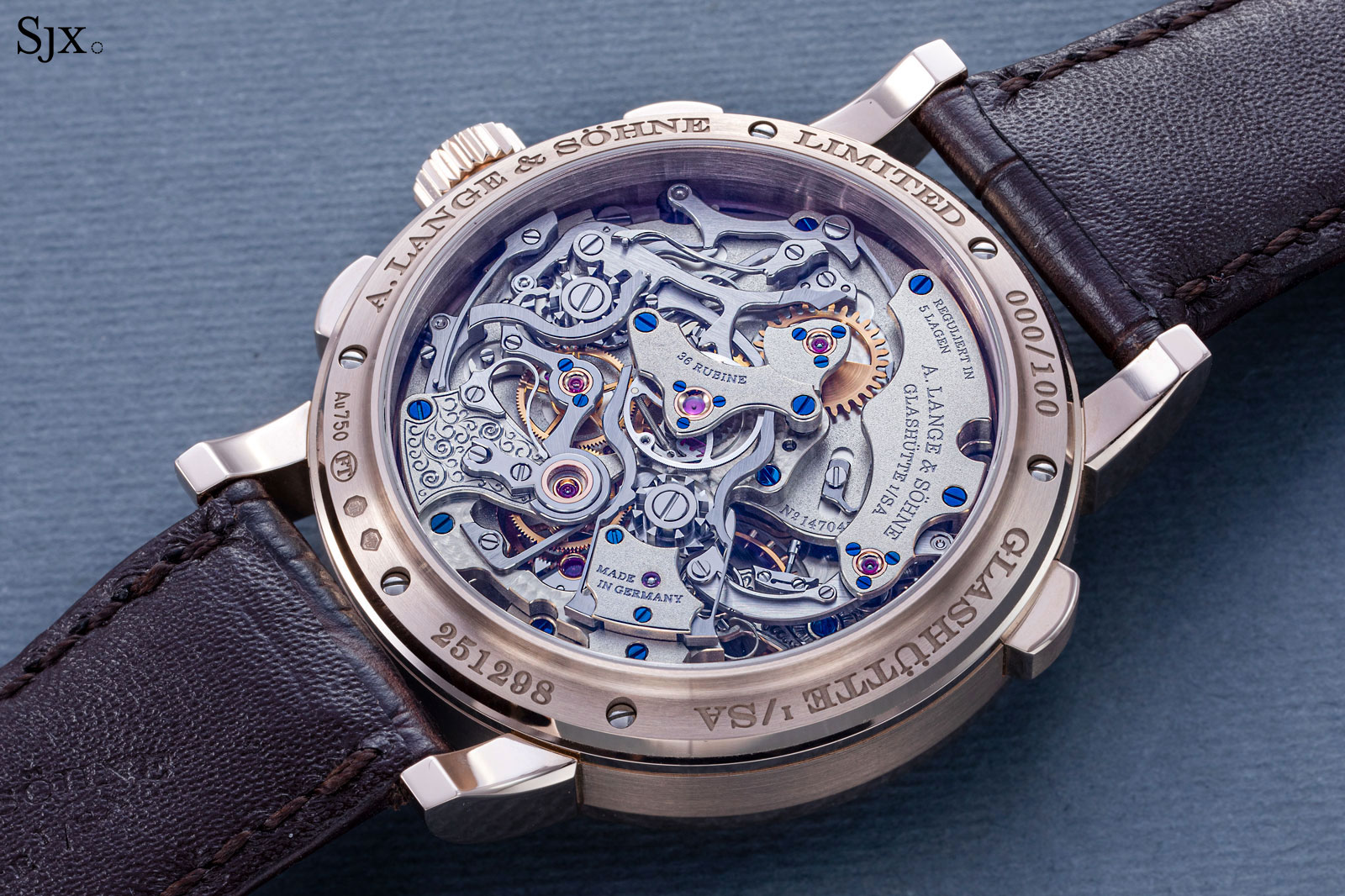
Its slim construction means that the L101.2 is a no-frills split-seconds. And that is partly why the 1815 Rattrapante is a value buy.
For one, it lacks an isolator for the split-seconds mechanism, which means there is drag generated when the split-seconds hand is stopped midway.
Stopping the split-seconds hand causes a pair of clamps close in on each side of the split-seconds wheel, but the chronograph wheel below – which is hitched to the split-seconds wheel – continues to turn to drive the primary seconds hand.
This creates friction as the split-seconds wheel is being halted by the clamps, which can lead to a drop in balance wheel amplitude over prolonged periods – a largely academic problem since few owners are likely to stop the split-seconds wheel for extended periods. In most modern split-seconds chronograph movements, the problem is solved with an isolator, which decouples the split-seconds wheel, reducing the friction generated by the frozen split-seconds wheel.
Another simplistic feature of the L101.2 is the tiny, coil spring for the reset of the split-seconds hand. It’s an effective and reliable solution, but not the prettiest.
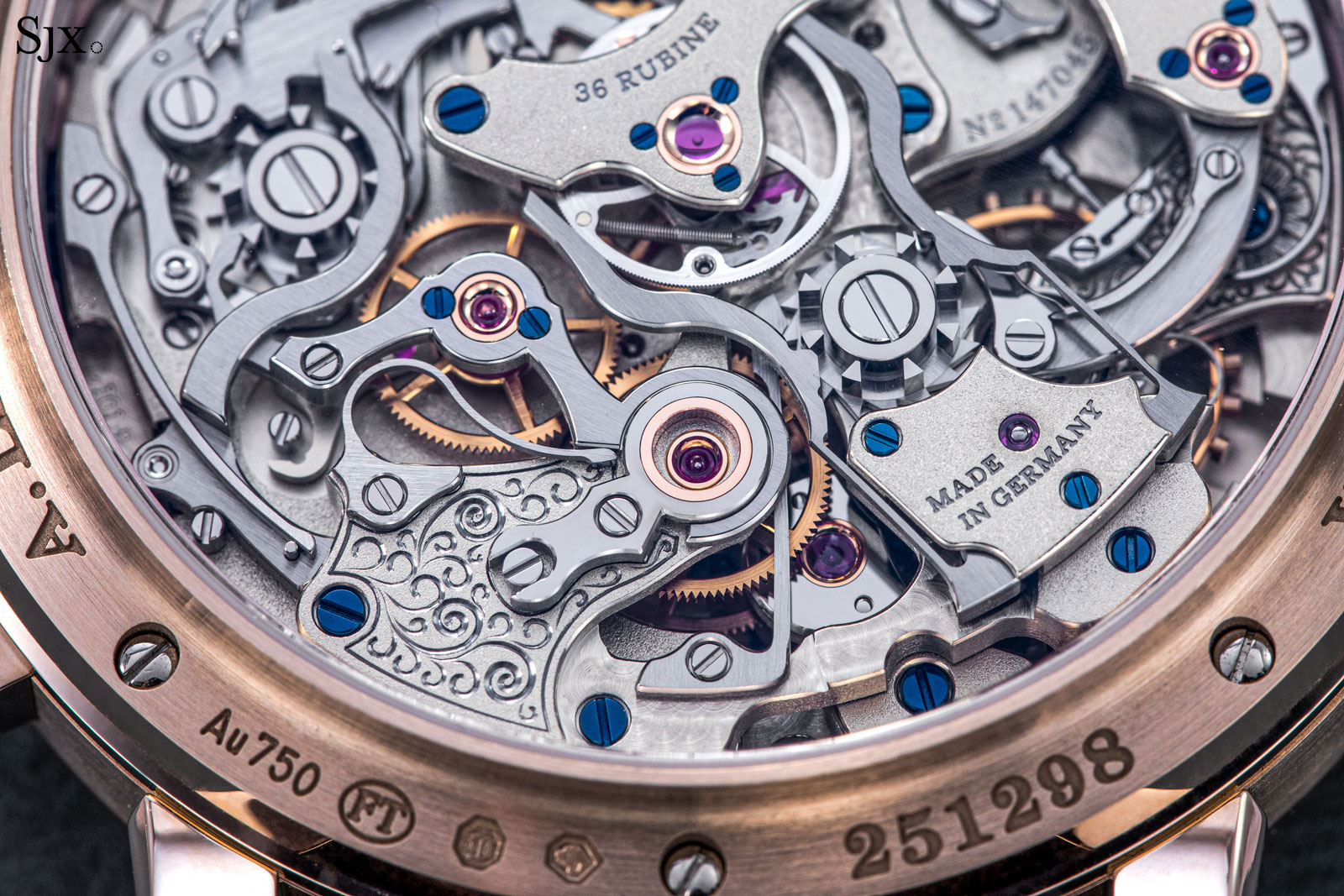
The pincer-shaped clamps for the split-seconds wheel with the secondary column wheel between them
While the L101.2 is not as fancy as other Lange split-time chronograph movements, it remains a gorgeous calibre.
Immediately distinguishable from standard Lange movements, the L101.2 is finished in a manner unique to the 175th Anniversary watches. Once again inspired by pocket watches, the bridges are delicately frosted, which is more difficult to perfect than the standard striping according to the brand, since a misstep in the fine grain is instantly visible.
At the same time, all of the engraving is filled with a dark grey lacquer. The floral engraving on the balance cock and chronograph clutch bridge is less dense than usual, giving it a slightly Art Nouveau feel.
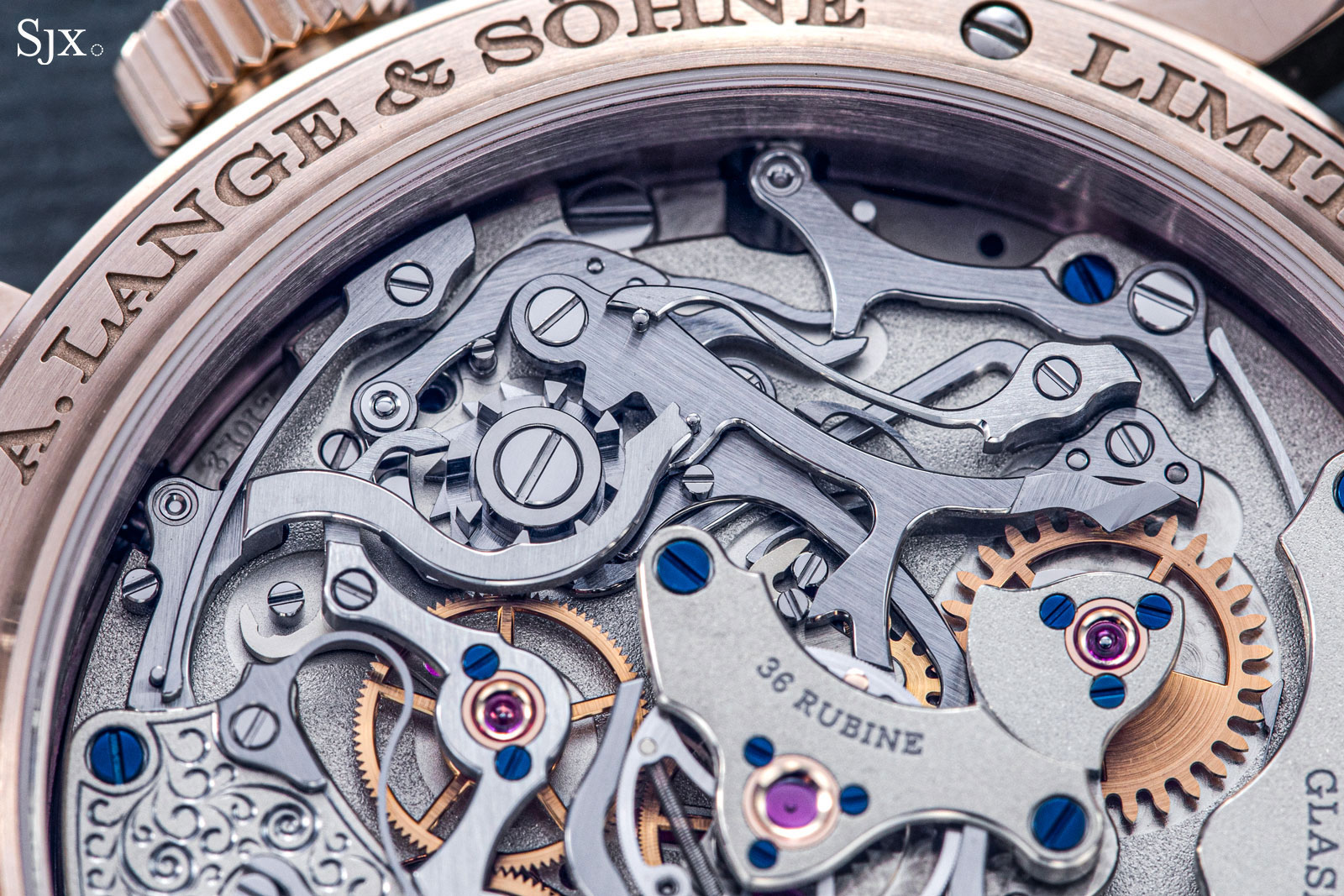
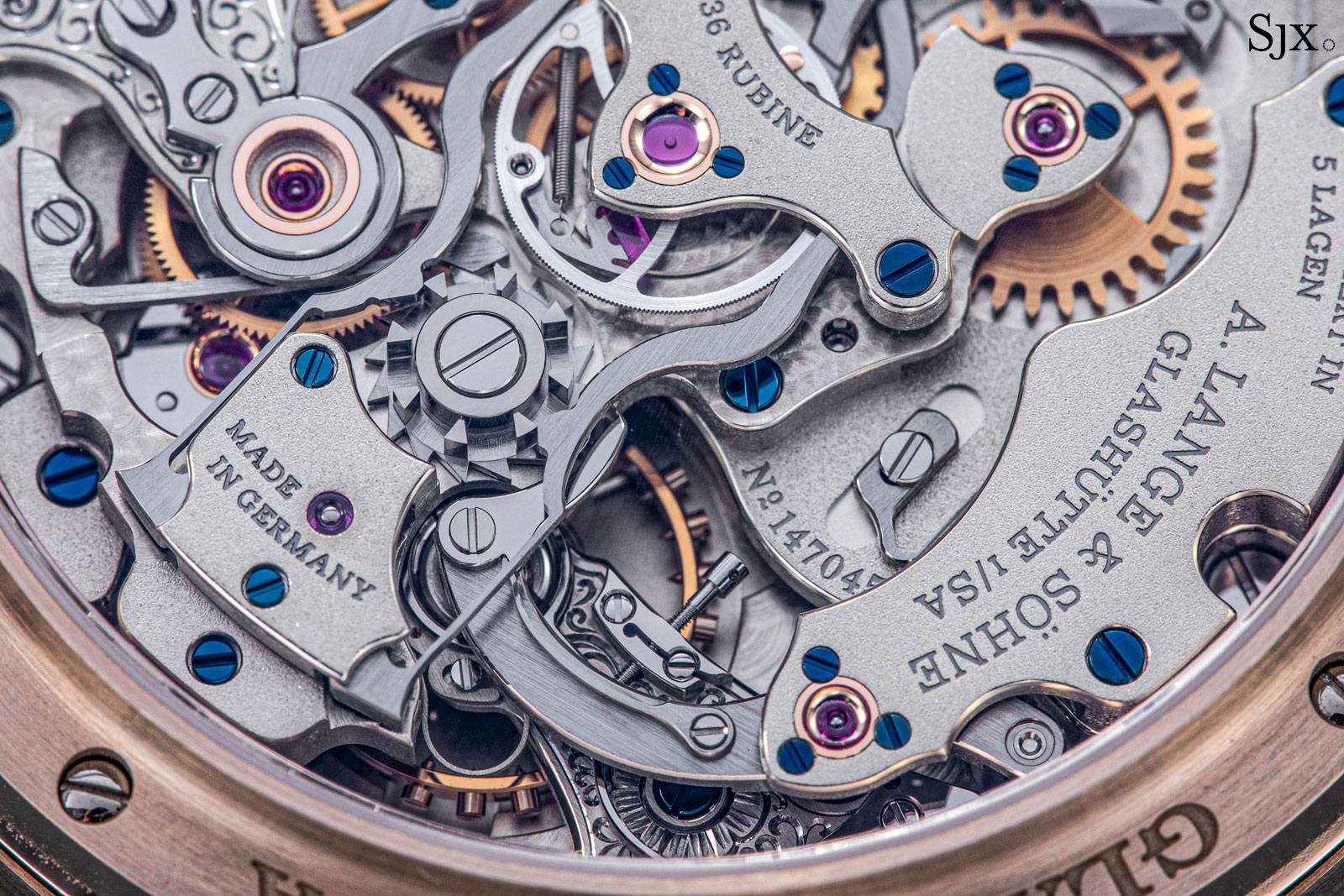
The result is a slightly more restrained aesthetic compared to the standard Lange movement, but one that is still deeply attractive. Even though it is different, everything is finished to an exceedingly high standard that is practically flawless.
All of the steel levers of the chronograph mechanism are especially refined, as is the case for any Lange chronograph – the steel parts incorporate numerous inward angles along their bevelled edges. At the same time, the muted colours of the frosted bridges and base plate affords the steel levers and gilded wheels greater contrast, making them more visually prominent.
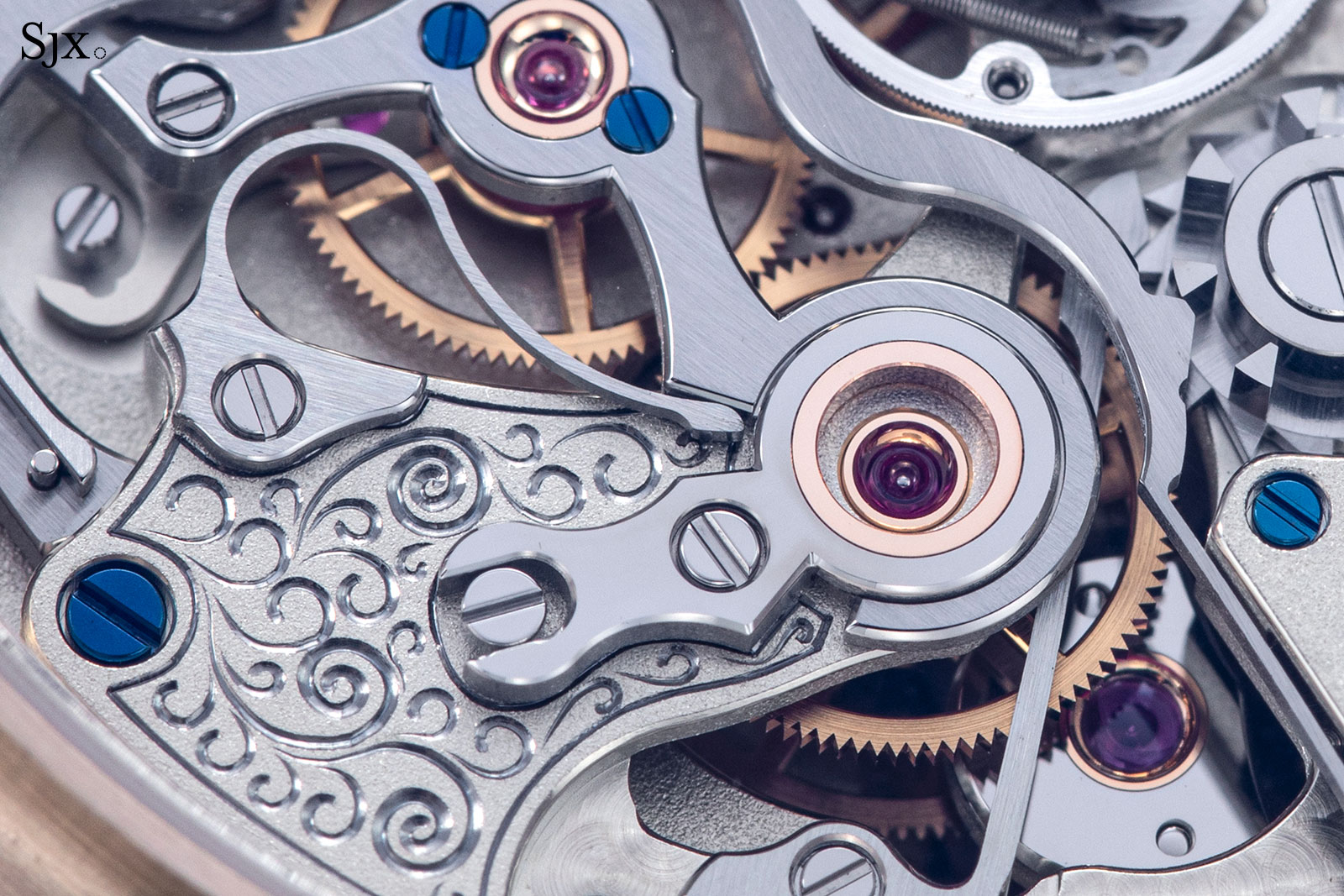
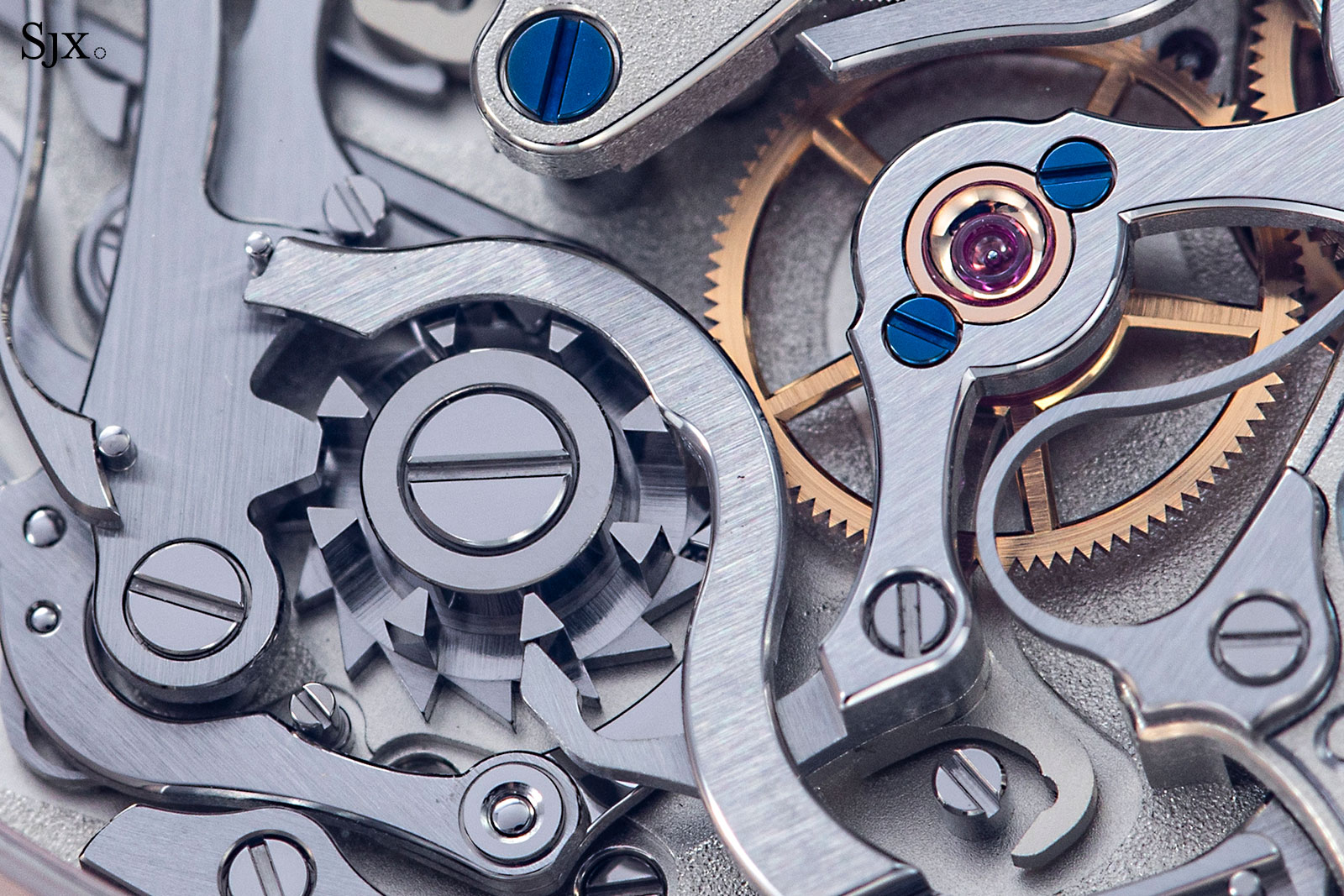
Concluding thoughts
The 1815 Rattrapante is an impressive watch in size and quality, but more wearable than usual. And it’s priced well, a value proposition in fact. The only drawback is its limited-edition nature, which means it is no longer easily available. But in the off chance that it happens to be available somewhere, go for it.
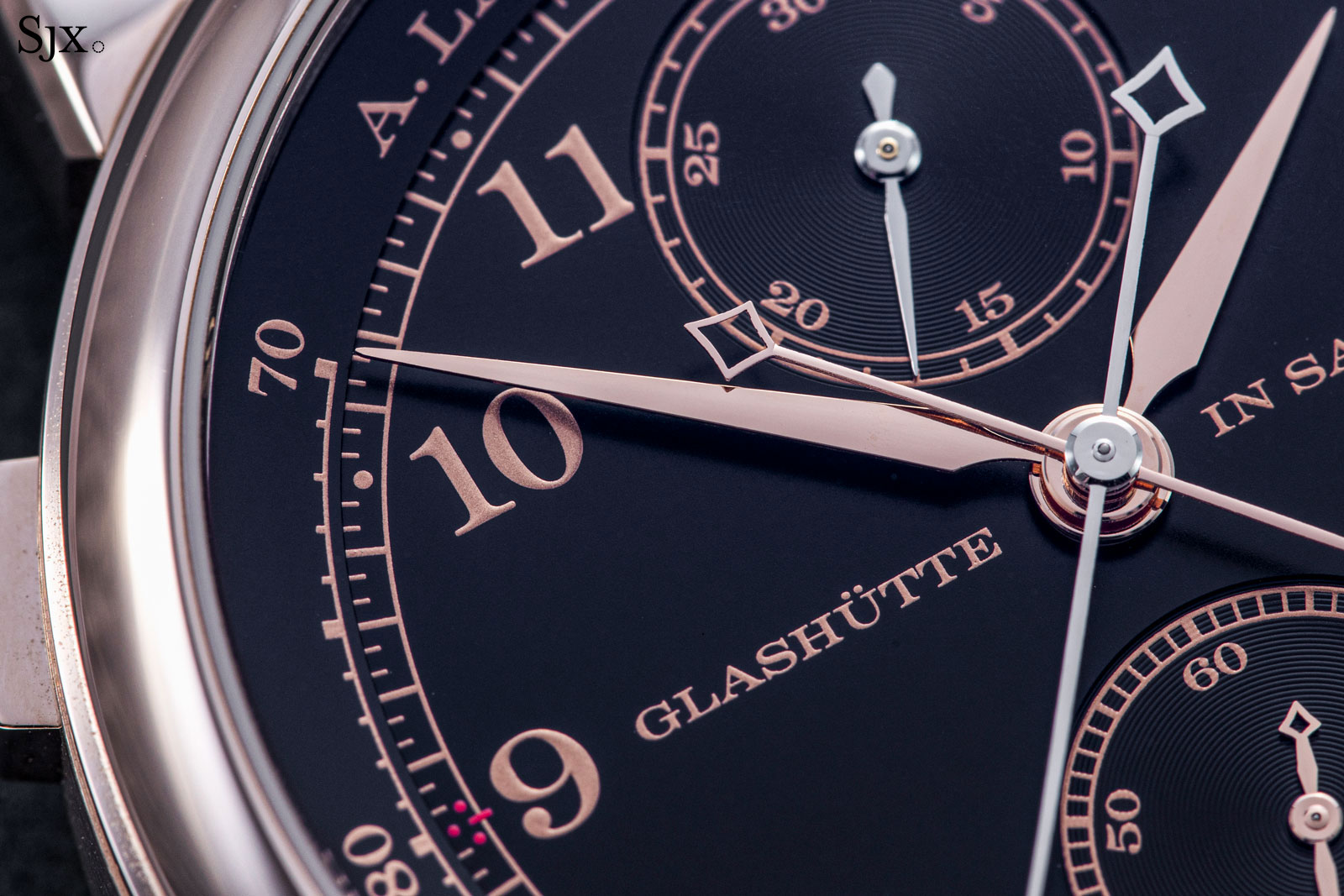
Key facts and price
A. Lange & Söhne 1815 Rattrapante Honeygold “Homage to F.A. Lange”
Ref. 425.050
Diameter: 41.2 mm
Height: 12.6 mm
Material: 18k Honeygold
Crystal: Sapphire
Water resistance: 30 m
Movement: L101.2
Functions: Hours, minutes, and split-seconds chronograph
Frequency: 21,600 beats per hour (3 Hz)
Winding: Hand-wind
Power reserve: 58 hours
Strap: Leather with 18k Honeygold pin buckle
Limited edition: 100 pieces
Availability: At boutiques only
Price: US$134,000 without taxes; or €130,000 including 19% German VAT
For more, visit Alange-soehne.com.
Back to top.

